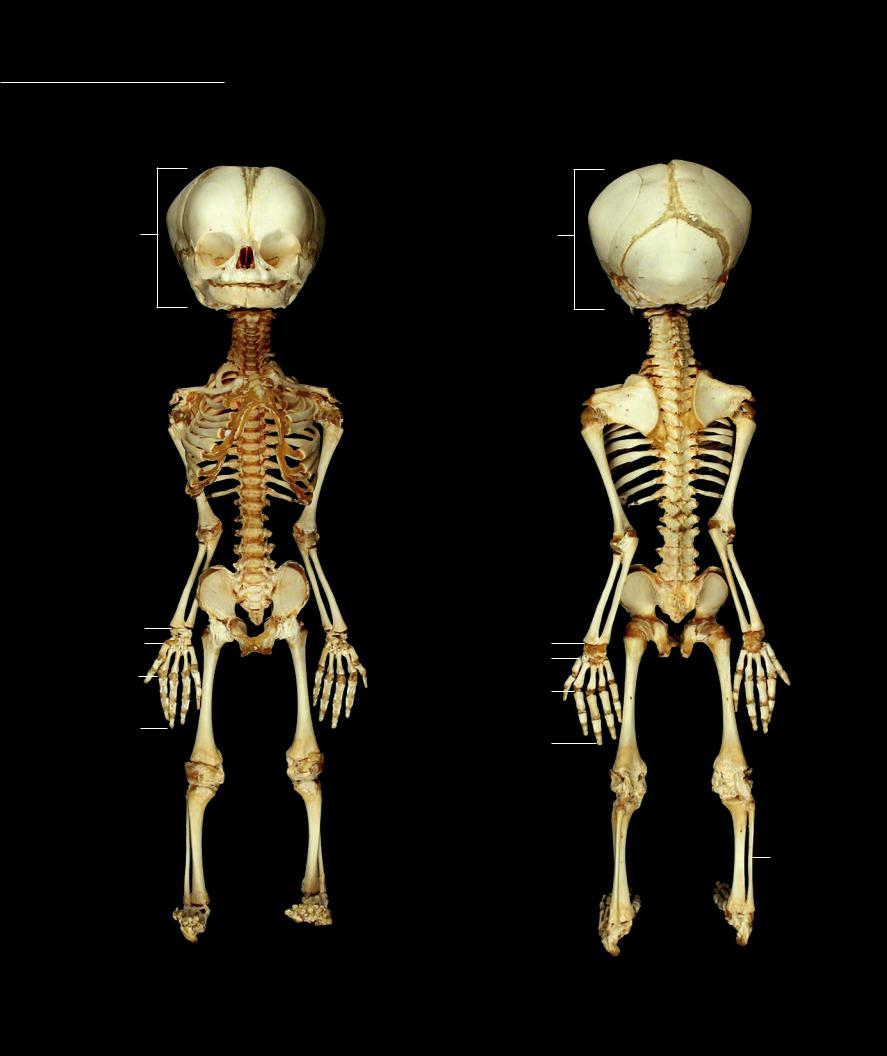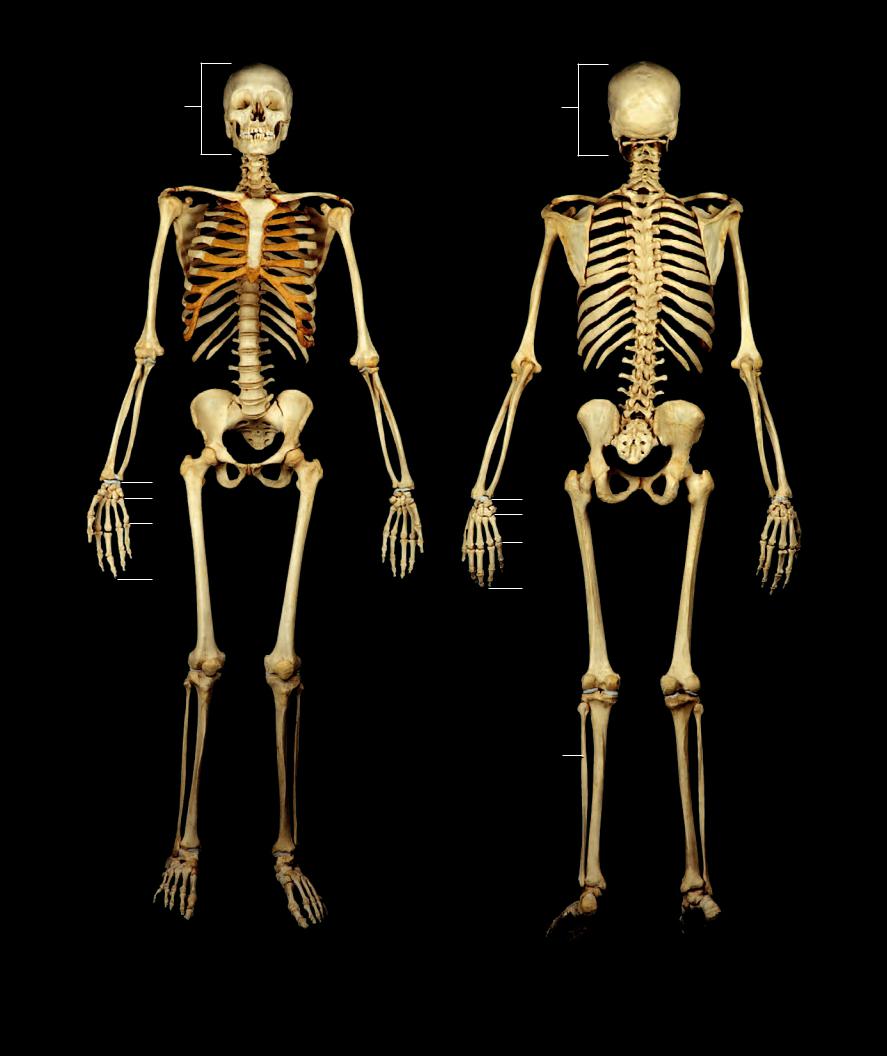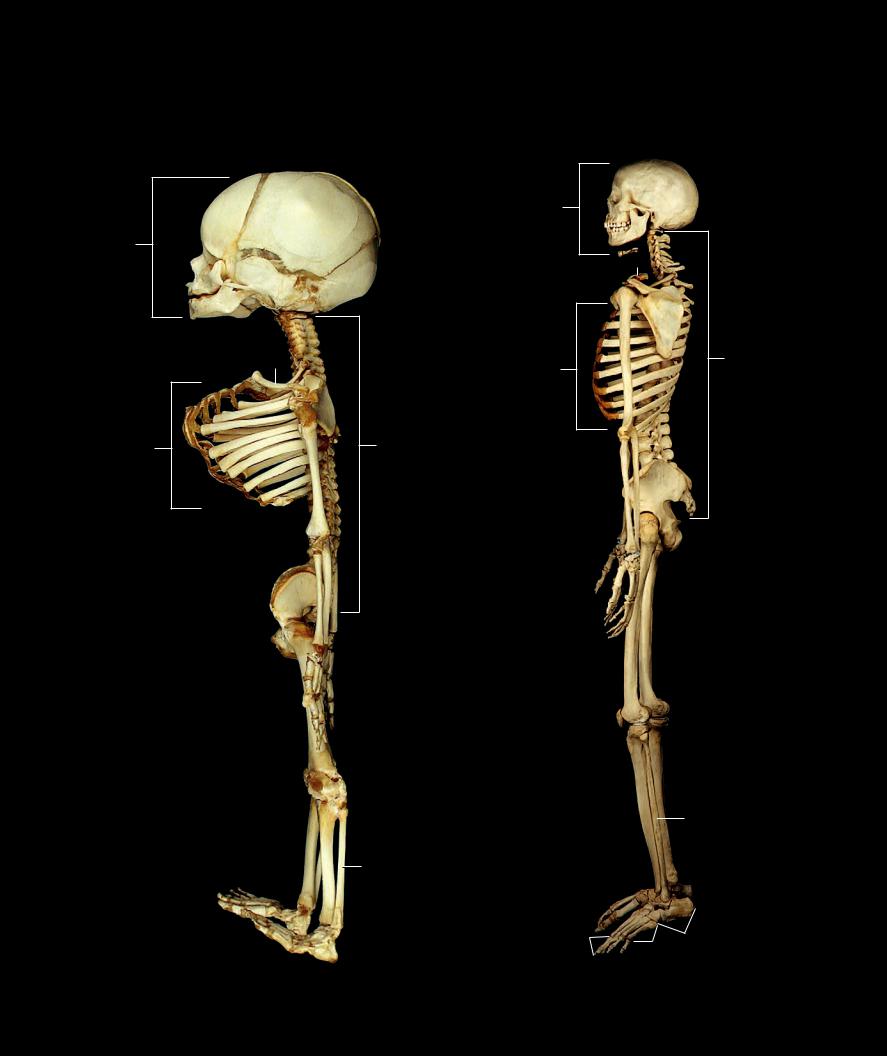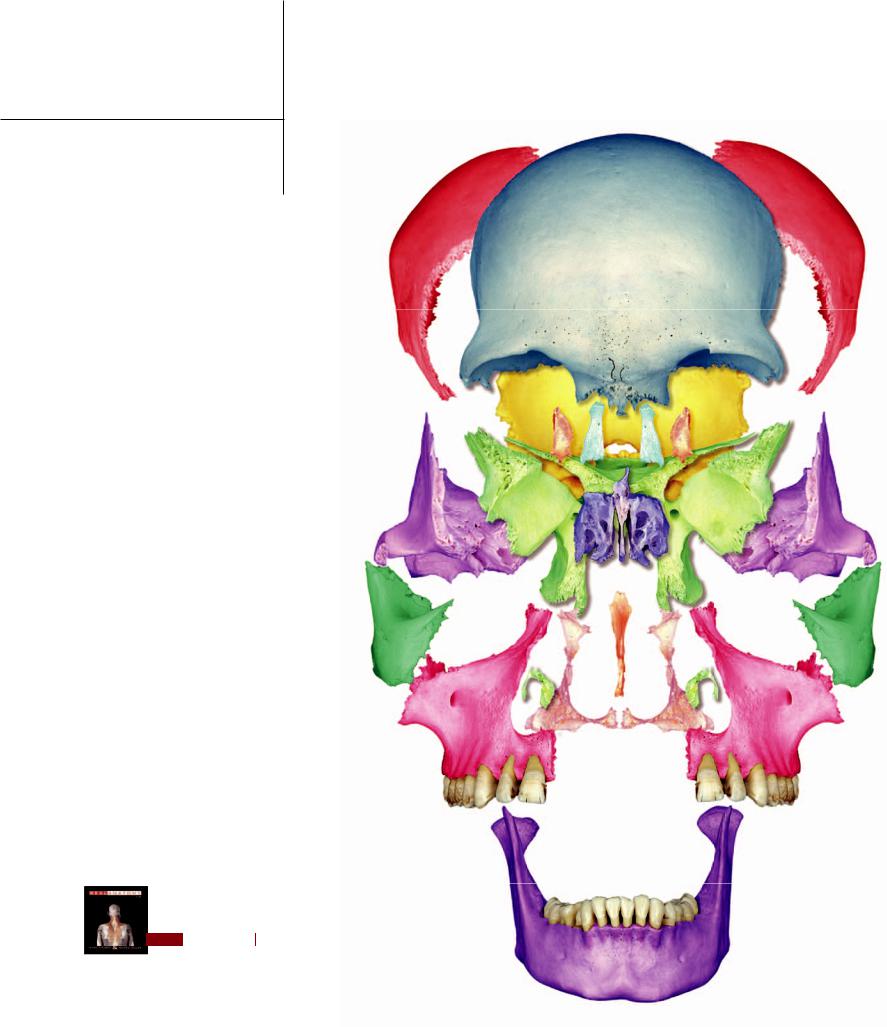
- •Preface
- •Content
- •Tissues
- •Nerve Tissue
- •Skin - Epidermis
- •Skin - Dermis
- •Skin - Glands
- •Subcutaneous Layer
- •Skeleton
- •Axial Skeleton
- •Cranium
- •Cranial Bones – Inferior Nasal Concha
- •Vertebral Column
- •Sacrum and Coccyx
- •Ribs
- •Sternum
- •Clavicle
- •Scapula
- •Humerus
- •Ulna
- •Radius
- •Metacarpals and Phalanges
- •Pelvis - Male
- •Femur
- •Tibia
- •Fibula
- •Tarsal Bones - Cuboid and Navicular
- •Phalanges
- •Patella
- •Skeletal Muscles
- •Transversospinales Muscles
- •Cervical Hypaxial Muscles
- •Thoracic and Abdominal Hypaxial Muscles
- •Shoulder Muscles - Rotator Cuff
- •Shoulder Muscles - Prime Movers
- •Anterior Brachial Muscles
- •Posterior Brachial Muscles
- •Posterior Thigh Muscles
- •Thigh Muscles
- •Lateral Leg Muscles
- •Posterior Leg Muscles
- •Spinal Nerves
- •Dorsal Rami
- •Intercostal Nerves
- •Cutaneous Nerves
- •Autonomic Nerves
- •Spinal Cord
- •Brain
- •Cerebrum
- •Cerebellum
- •Meninges
- •Hypothalamus
- •Pituitary Gland
- •Pineal Gland
- •Thymus
- •Pancreas
- •Ovaries
- •Testes
- •Blood
- •Heart
- •Lymphatics
- •Larynx
- •Lungs
- •Cast of Trachea and Bronchial Tree
- •Esophagus
- •Stomach
- •Pancreas
- •Large Intestine
- •Mesenteries
- •Omenta
- •Female Reproductive Organs
- •Ovary
- •Vagina
- •Ductus Deferens and Spermatic Cord
- •Penis
- •Index

Skeleton The fi rst appearance of the skeletal elements arises during the second month of embryonic life when connective tissue and cartilage precursors to the bones arise. Slowly through fetal life,
childhood, puberty, and the teenage years the bones mature into their adult forms. This developmental process combines more than 500 bone-forming centers into the fi nal 206 bones of the skeleton. This page, the facing page, and the page that follows depict changes in the skeleton from a newborn to an adult.
1
2
4
3
6
2
7
12
8
9
10
11
13
15
16 
Newborn skeleton
Anterior view
1 |
Cranial bones |
2 |
Vertebral column |
3 |
Ribs |
4 |
Clavicle |
5 |
Scapula |
6 |
Humerus |
7 |
Ulna |
8 |
Radius |
9 |
Carpals |
10Metacarpals
11Phalanges
12Os coxae
13Femur
14Patella
15Tibia
16Fibula
17Tarsals
18Metatarsals
1
2
5
63
2 7
12
8
9
10
11
13
15
16
17
Newborn skeleton
Posterior view
30

1
2
4
5
3
6
32
7
12
8
9
10
11
13
14
15
 16
16
17
18
11
Adult skeleton
Anterior view
11
4
5
2
63
7
12
8
9
10
11
13
15
16
17
Adult skeleton
Posterior view
31

1 |
Cranial bones |
7 |
Ulna |
2 |
Vertebral column |
8 |
Radius |
3 |
Ribs |
9 |
Carpals |
4 |
Clavicle |
10 |
Metacarpals |
5 |
Scapula |
11 |
Phalanges |
6 |
Humerus |
12 |
Os coxae |
1
|
4 |
|
|
|
4 |
|
|
|
|
|
5 |
|
|
|
|
3 |
6 |
2 |
|
|
|||
7
12
8
13
15
16
Newborn skeleton
Lateral view
13Femur
14Patella
15Tibia
16Fibula
17Tarsals
18Metatarsals
1
4
5
6
2
3
7
12
8
9
10
11
13
14 
15
16
11
17
18
Adult skeleton
Lateral view
32

5 Axial Skeleton
The axial skeleton, comprised of the skull, vertebral column, ribs, and sternum, forms the central axis of the body. This sturdy central core is the most primitive portion of the vertebrate skeletal system. It evolved as the initial skeleton of the first vertebrate animals, to which the limb bones (the subject of the next chapter) were much later additions. The majority of the axial skeleton’s bony elements, from the bones at the base of the skull through all the
vertebrae and ribs, form as serial homologues from the segmental embryonic somites. Because of this shared developmental similarity each body segment, from the base of the skull to the end of the coccyx, has the same basic skeletal design. This is clearly evident in the structure of the vertebrae and ribs. As you study these skeletal elements in the photos of this chapter, notice their similarities.
The elements of the axial skeleton have many functional roles in the body. Both the cranial skeleton and the vertebral column form a strong protective case around the delicate tissues of the central nervous system. Additionally, the cranium fixes in space important nervous structures, such as the internal ear and eye, both of which would not function properly in an unstable environment. The cranium also plays an important role in the acquisition and processing of food, respiratory gases,
and sensory input such as sound. In addition to protecting the spinal cord, the vertebrae form a strong, flexible rod. This strong, flexible column not only forms the central support axis of the body from which the limbs are suspended, but is also capable of a varied range of joint movements that are essential to our daily functions.
Find more information about the axial skeleton in
R E A L A N AT O M Y
33
